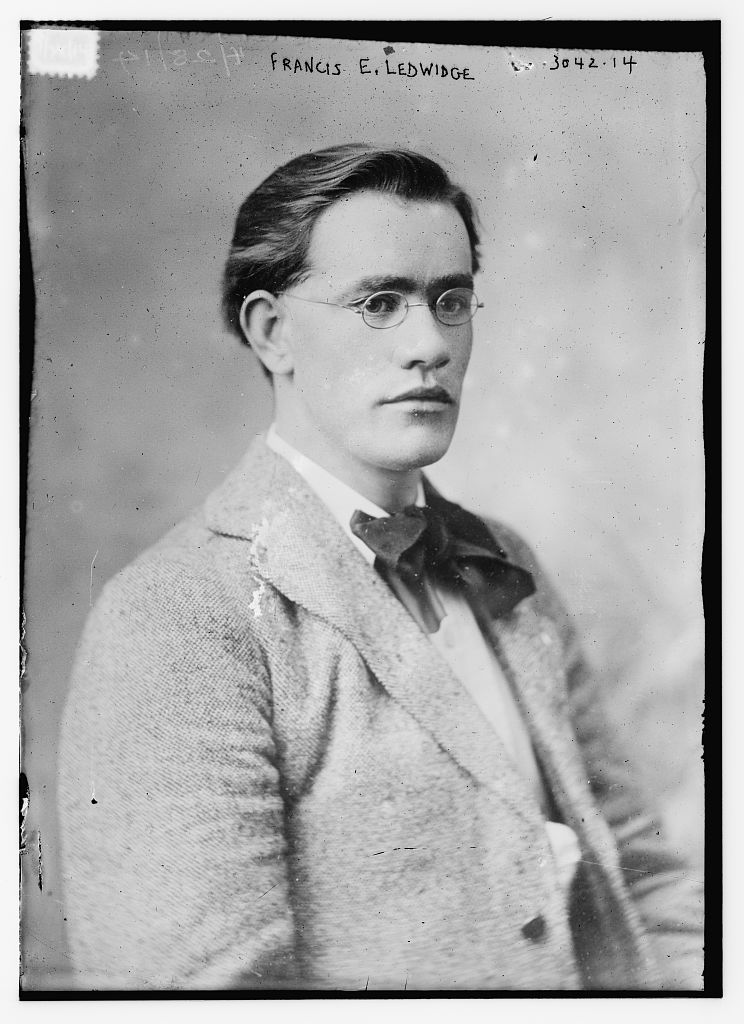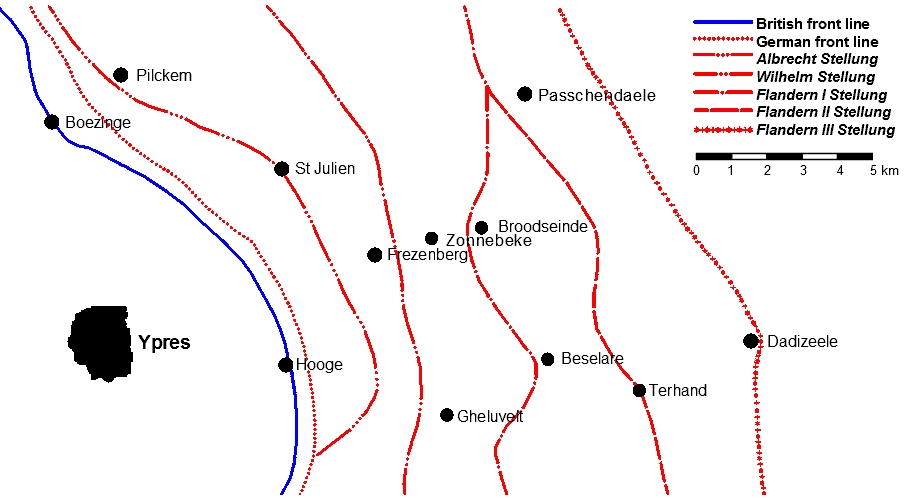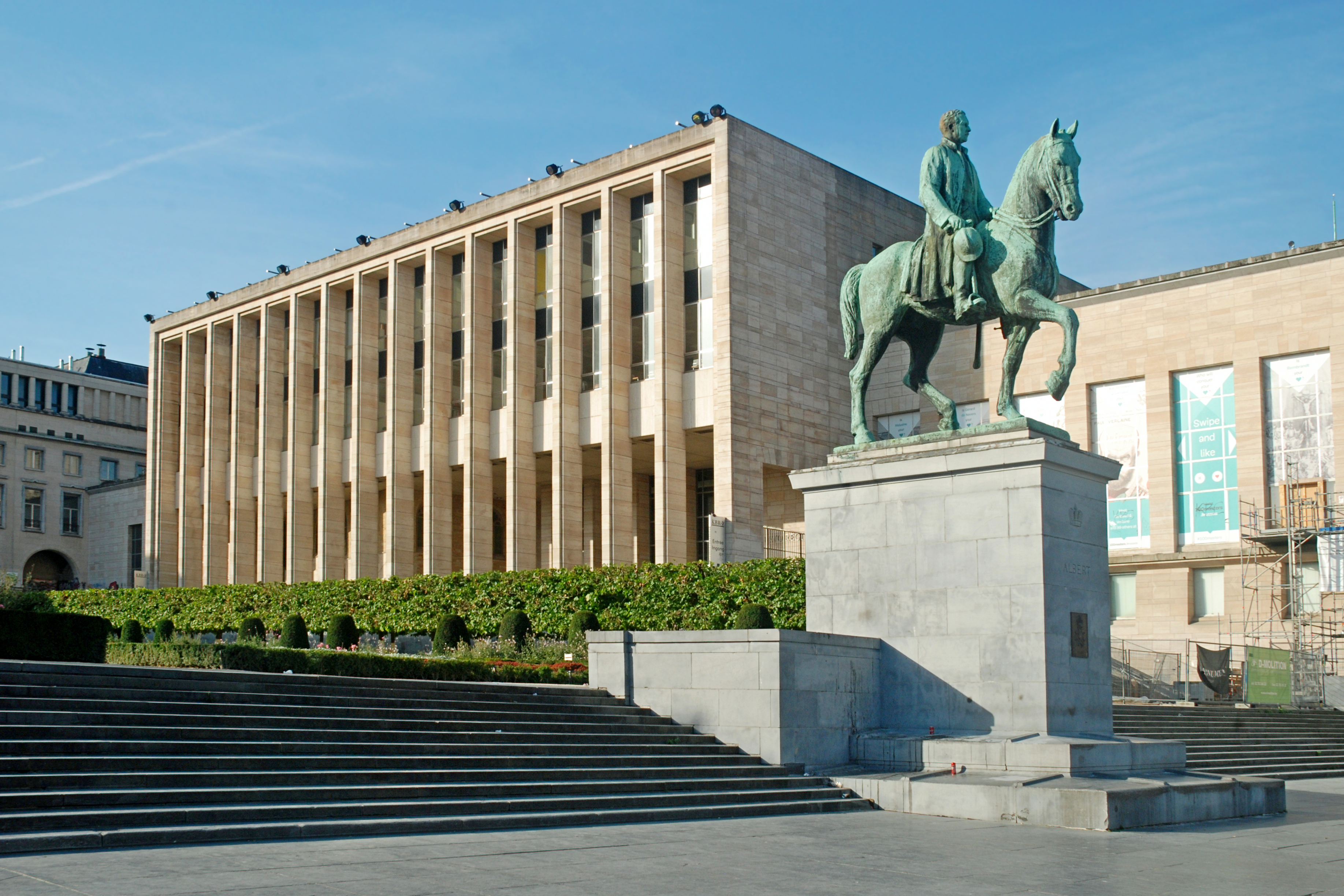|
Artillery Wood Cemetery
Artillery Wood Cemetery, near Boezinge, Belgium, is a Commonwealth War Graves Commission cemetery from the First World War. The cemetery grounds were assigned to the United Kingdom in perpetuity by King Albert I of Belgium in recognition of the sacrifices made by the British Empire in the defence and liberation of Belgium during the war. Establishment The cemetery was established in 1917 after fighting in the immediate area – the Battle of Pilckem Ridge – had moved away and was used for burials until March 1918. At the point of the Armistice there were some 141 graves in the cemetery. Concentration from the battlefields and three smaller cemeteries (Boesinghe Chateau Grounds, Brissein House and Captain's Farm) enlarged this to the present 1,307. Notable burials It is the location of the grave of Hedd Wyn (1887–1917), posthumous winner of the bardic chair at the 1917 National Eisteddfod, and of Francis Ledwidge (1887–1917), the Irish poet. [...More Info...] [...Related Items...] OR: [Wikipedia] [Google] [Baidu] |
Commonwealth War Graves Commission
The Commonwealth War Graves Commission (CWGC) is an intergovernmental organisation of six independent member states whose principal function is to mark, record and maintain the graves and places of commemoration of Commonwealth of Nations military service members who died in the two World Wars. The commission is also responsible for commemorating Commonwealth civilians who died as a result of enemy action during the Second World War. The commission was founded by Fabian Ware, Sir Fabian Ware and constituted through Royal Charter in 1917 as the Imperial War Graves Commission. The change to the present name took place in 1960. The commission, as part of its mandate, is responsible for commemorating all Commonwealth war dead individually and equally. To this end, the war dead are commemorated by a name on a headstone, at an identified site of a burial, or on a memorial. War dead are commemorated uniformly and equally, irrespective of military or civil rank, race or creed. The co ... [...More Info...] [...Related Items...] OR: [Wikipedia] [Google] [Baidu] |
British Empire
The British Empire was composed of the dominions, colonies, protectorates, mandates, and other territories ruled or administered by the United Kingdom and its predecessor states. It began with the overseas possessions and trading posts established by England between the late 16th and early 18th centuries. At its height it was the largest empire in history and, for over a century, was the foremost global power. By 1913, the British Empire held sway over 412 million people, of the world population at the time, and by 1920, it covered , of the Earth's total land area. As a result, its constitutional, legal, linguistic, and cultural legacy is widespread. At the peak of its power, it was described as "the empire on which the sun never sets", as the Sun was always shining on at least one of its territories. During the Age of Discovery in the 15th and 16th centuries, Portugal and Spain pioneered European exploration of the globe, and in the process established large overse ... [...More Info...] [...Related Items...] OR: [Wikipedia] [Google] [Baidu] |
Commonwealth War Graves Commission Cemeteries In Belgium
A commonwealth is a traditional English term for a political community founded for the common good. Historically, it has been synonymous with "republic". The noun "commonwealth", meaning "public welfare, general good or advantage", dates from the 15th century. Originally a phrase (the common-wealth or the common wealth – echoed in the modern synonym "public wealth"), it comes from the old meaning of "wealth", which is "well-being", and is itself a loose translation of the Latin res publica (republic). The term literally meant "common well-being". In the 17th century, the definition of "commonwealth" expanded from its original sense of "public welfare" or "commonweal" to mean "a state in which the supreme power is vested in the people; a republic or democratic state". The term evolved to become a title to a number of political entities. Three countries – Australia, the Bahamas, and Dominica – have the official title "Commonwealth", as do four U.S. states and two U.S. territo ... [...More Info...] [...Related Items...] OR: [Wikipedia] [Google] [Baidu] |
Find A Grave
Find a Grave is a website that allows the public to search and add to an online database of cemetery records. It is owned by Ancestry.com. Its stated mission is "to help people from all over the world work together to find, record and present final disposition information as a virtual cemetery experience." Volunteers can create memorials, upload photos of grave markers or deceased persons, transcribe photos of headstones, and more. , the site claimed more than 210 million memorials. History The site was created in 1995 by Salt Lake City resident Jim Tipton (born in Alma, Michigan) to support his hobby of visiting the burial sites of celebrities. He later added an online forum. Find a Grave was launched as a commercial entity in 1998, first as a trade name and then incorporated in 2000. The site later expanded to include graves of non-celebrities, in order to allow online visitors to pay respect to their deceased relatives or friends. In 2013, Tipton sold Find a Grave to Ancestry ... [...More Info...] [...Related Items...] OR: [Wikipedia] [Google] [Baidu] |
Francis Ledwidge
Francis Edward Ledwidge (19 August 188731 July 1917) was a 20th-century Irish poet. From Slane, County Meath, and sometimes known as the "poet of the blackbirds", he was later also known as a First World War war poet. He befriended the established writer Lord Dunsany, who helped with publication of his works. He was killed in action at Ypres in 1917.Lowry, Donal in: McGuire, James and Quinn, James (eds): ''Dictionary of Irish Biography'' From the Earliest Times to the Year 2002; Royal Irish Academy Vol. 5, Ledwidge, Francis Edward pp. 394-97; Cambridge University Press (2009) Born to a poor family in Slane, County Meath, Ledwidge started writing at an early age, and was first published in a local newspaper at the age of 14. Finding work as a labourer and miner, he was also a trade union activist, and a keen patriot and nationalist, associated with Sinn Féin. He became friendly with a local landowner, the writer Lord Dunsany, who gave him a workspace in the library of Dunsan ... [...More Info...] [...Related Items...] OR: [Wikipedia] [Google] [Baidu] |
National Eisteddfod
The National Eisteddfod of Wales (Welsh: ') is the largest of several eisteddfodau that are held annually, mostly in Wales. Its eight days of competitions and performances are considered the largest music and poetry festival in Europe. Competitors typically number 6,000 or more, and overall attendance generally exceeds 150,000 visitors. The 2018 Eisteddfod was held in Cardiff Bay with a fence-free 'Maes'. In 2020, the event was held virtually under the name AmGen; events were held over a one-week period. History The National Museum of Wales says that "the history of the Eisteddfod may etraced back to a bardic competition held by the Lord Rhys in Cardigan Castle in 1176", and local Eisteddfodau have certainly been held for many years prior to the first national Eisteddfod. There have been multiple Eisteddfodau held on a national scale in Wales, such as the Gwyneddigion Eisteddfod of , the Provincial Eisteddfodau from 1819 to 1834, the Abergavenny Eisteddfodau of 1835 to 1851, a ... [...More Info...] [...Related Items...] OR: [Wikipedia] [Google] [Baidu] |
Chairing Of The Bard
The Chairing of the Bard () is one of the most important events in the Wales, Welsh eisteddfod tradition. The most famous chairing ceremony takes place at the National Eisteddfod of Wales, and is always on the Friday afternoon of Eisteddfod week. Winners are referred to as ''Prifardd, Y Prifardd'' (literally "The Chief Bard"). The custom of chairing the bard is, however, much older than the modern eisteddfod ceremony, and is known to have taken place as early as 1176. A new bardic chair is specially designed and made for each eisteddfod and is awarded to the winning entrant in the competition for the "awdl", poetry written in a strict metre form known as cynghanedd. It is possible for the chair to be withheld, if the standard of entries is not considered high enough by the judges. This was the case in 1889, when a chair made for a minor eisteddfod at Bagillt, in Flintshire, was not awarded. The chair in question made news in 2006, when it was returned to Wales after being a ... [...More Info...] [...Related Items...] OR: [Wikipedia] [Google] [Baidu] |
Hedd Wyn
Hedd Wyn (born Ellis Humphrey Evans, 13 January 188731 July 1917) was a Welsh-language poet who was killed on the first day of the Battle of Passchendaele during World War I. He was posthumously awarded the bard's chair at the 1917 National Eisteddfod. Evans, who had been awarded several chairs for his poetry, was inspired to take the bardic name ''Hedd Wyn'' (, "blessed peace") from the way sunlight penetrated the mist in the Meirionnydd valleys. Born in the village of Trawsfynydd, Wales, Evans wrote much of his poetry while working as a shepherd on his family's hill farm. His style, which was influenced by romantic poetry, was dominated by themes of nature and religion. He also wrote several war poems following the outbreak of war on the Western Front in 1914. . Early life Ellis Humphrey Evans was born on 13 January 1887 at Penlan, a house in the centre of Trawsfynydd, Meirionydd, Wales. He was the eldest of eleven children born to Evan and Mary Evans. In the spring of ... [...More Info...] [...Related Items...] OR: [Wikipedia] [Google] [Baidu] |
Armistice With Germany (Compiègne)
The Armistice of 11 November 1918 was the armistice signed at Le Francport near Compiègne that ended fighting on land, sea, and air in World War I between the Entente and their last remaining opponent, Germany. Previous armistices had been agreed with Bulgaria, the Ottoman Empire and Austria-Hungary. It was concluded after the German government sent a message to American president Woodrow Wilson to negotiate terms on the basis of a recent speech of his and the earlier declared " Fourteen Points", which later became the basis of the German surrender at the Paris Peace Conference, which took place the following year. Also known as the Armistice of Compiègne (french: Armistice de Compiègne, german: Waffenstillstand von Compiègne) from the place where it was officially signed at 5:45 a.m. by the Allied Supreme Commander, French Marshal Ferdinand Foch, it came into force at 11:00 a.m. Central European Time (CET) on 11 November 1918 and marked a vi ... [...More Info...] [...Related Items...] OR: [Wikipedia] [Google] [Baidu] |
Battle Of Pilckem Ridge
The Battle of Pilckem Ridge (31 July – 2 August 1917) was the opening attack of the Third Battle of Ypres in the First World War. The British Fifth Army, supported by the Second Army on the southern flank and the French (First Army) on the northern flank, attacked the German 4th Army, which defended the Western Front from Lille northwards to the Ypres Salient in Belgium and on to the North Sea coast. On 31 July, the Anglo-French armies captured Pilckem (Flemish: Pilkem) Ridge and areas on either side, the French attack being a great success. After several weeks of changeable weather, heavy rain fell during the afternoon of 31 July. In the XIX Corps area in the centre and on the right of XVIII Corps, three reserve brigades advanced from the black line to the main objective (green line) and pressed on towards the red line, the furthest that exploitation on local initiative had been allowed for in the plan. It began to rain, cutting off the advanced British troops from view ... [...More Info...] [...Related Items...] OR: [Wikipedia] [Google] [Baidu] |
Albert I Of Belgium
Albert I (8 April 1875 – 17 February 1934) was King of the Belgians from 23 December 1909 until his death in 1934. Born in Brussels as the fifth child and second son of Prince Philippe, Count of Flanders and Princess Marie of Hohenzollern-Sigmaringen, Albert succeeded his uncle, Leopold II, to the Belgian throne in 1909. He married Elisabeth of Bavaria, with whom he had three children. Albert ruled during an eventful period in the history of Belgium, which included the period of World War I (1914–1918), when most of Belgium was occupied by German forces. Other crucial events of his reign included the adoption of the Treaty of Versailles in June 1919, the ruling of the Belgian Congo as an overseas possession of Belgium along with the League of Nations mandate of Ruanda-Urundi, the reconstruction of Belgium following the war, and the first five years of the Great Depression (1929–1934). Albert died in a mountaineering accident in eastern Belgium in 1934, at the age ... [...More Info...] [...Related Items...] OR: [Wikipedia] [Google] [Baidu] |







.jpg)

